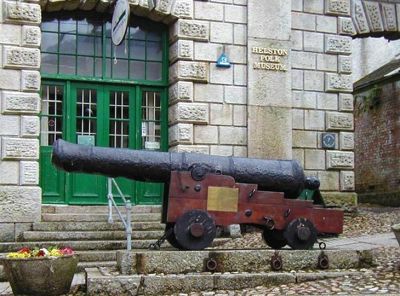
Set in Helston's historic Market House and Drill Hall is a surprisingly large (and interesting) museum. Formerly known as the Helston Folk Museum it is home to one of the biggest social history collections in the South West. The museum is spread over three floors with five separate display halls containing thousands of objects.
The Museum's collections cover both the social and industrial history of Helston and the Lizard Peninsula. Exhibits include objects of interest from mining, farming and fishing along with displays on home life during the 18th to 20th centuries.
The oldest exhibits form a small archaeology collection which dates back to the Lizard Peninsula's earliest settlers. These range from neolithic flints through to finds from a Roman villa. Other collections include geology, for which the Lizard is famed, costume, photography and, of course, plenty of reference to Helston's best-known event - Flora Day.
One of the museum's most enduring features is the large canon in the street in front of the main doors. This was salvaged from the wreck of the naval frigate HMS Anson which went down of the notorious Loe Bar in 1807. It was this incident, and the accompanying loss of life which inspired Helston local Henry Trengrouse to develop the breeches buoy. There is further information on Trengrouse and his inventions within the museum.
Helston Museum was founded in 1949 and has grown considerably over the years. After many years of being run by Cornwall Council the management of the museum was taken over by the South Kerrier Heritage Trust, with day-to-day running largely undertaken by volunteers.





